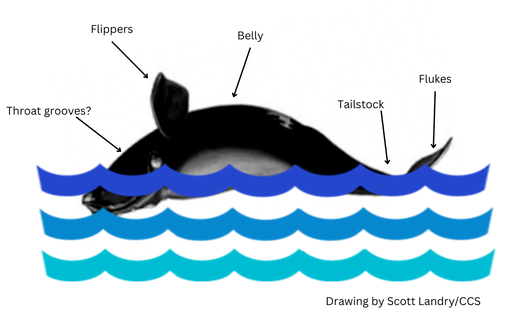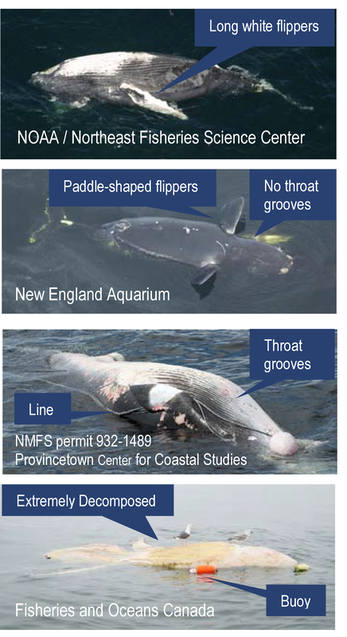report a Dead whale
Please help collect vital information by documenting and reporting these critical sightings. Dead whales typically float belly up and can be very difficult to to identify. Closely examine the carcass for signs of injury. Video and/or photos are extremely valuable, especially close-ups of the tailstock, flukes, flippers, and injuries.
WHO SHOULD YOU CALL?
U.S. Coast Guard VHF Ch. 16
or
Virginia to Maine: 866-755-NOAA
Florida to North Carolina: 877-WHALE-HELP
Federal regulations prohibit approaching right whales within 500 yards (1500 feet).
|
What Information Should You Report?
|


